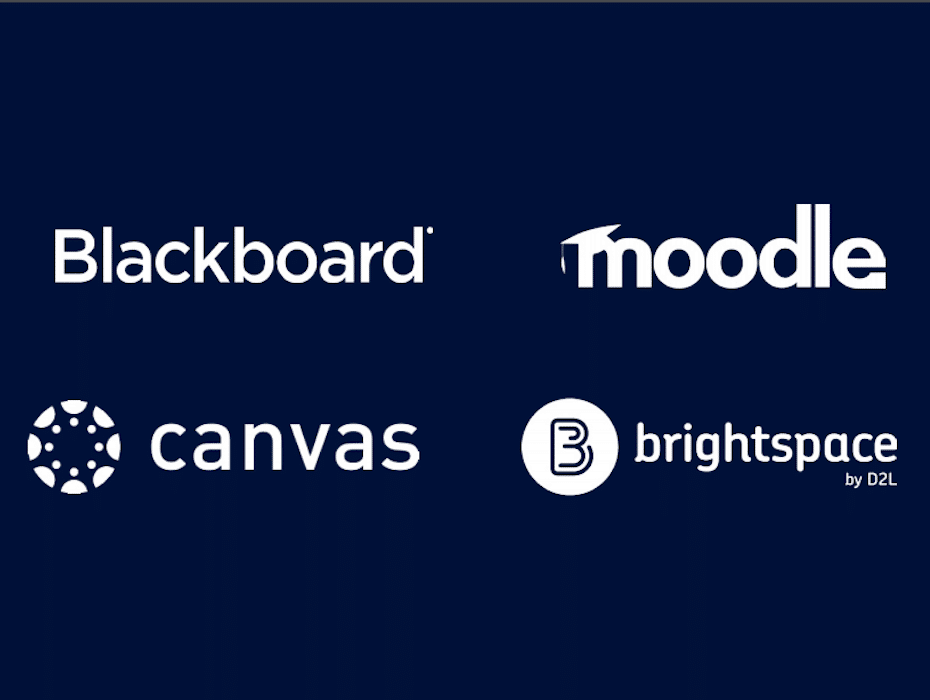In 2020, institutions of higher education moved to virtual learning. Students, their teachers, and administrators suddenly had to navigate teaching and learning in virtual classrooms. The transition was challenging, yet there were also some important virtual learning best practices that surfaced.
Going forward, virtual learning will continue to be a prominent part of education, as it enables institutions to reach students wherever they are. Given that, it makes sense to learn the top virtual learning tips that ensure student success.
Tip 1: Choose the right virtual learning platform
Using the right virtual learning platform is critical for students to not only absorb the material, but participate in the virtual classroom.
What features make it the “right” virtual learning platform?
- It should be easy for students to use
- Students should be able to use it from their device of choice
- Instructors should have the ability to teach live classes, and they should be able to share their screens
- Students should have live message capabilities
- The platform should give instructors the ability to record lessons
- The platform should integrate with leading learning management tools such as Canvas, so teachers can post recorded lectures
- There should be built-in messaging, video conferencing, and telephony capabilities, so students can connect with instructors outside of class
- There should be file sharing capabilities so students can easily share their work with classmates or instructors
- The platform should be secure, so students have peace of mind and can focus on learning
Tip 2: Set clear expectations from the beginning
For many students, virtual learning is a new experience. They’re accustomed to sitting in a classroom and waiting for an instructor to call on them. A different dynamic is at play in a virtual classroom.
Instructors need to set clear expectations from the beginning by:
- Explaining what is acceptable behavior in the classroom
- Detailing how often the instructor will communicate with students, and through which channels
- Reviewing the syllabus and grading requirements
When students understand what their instructors expect of them, they have a greater chance of successfully learning the curriculum materials.
Tip 3: Engage in face-to-face learning whenever possible
Studies have shown that students (especially those in the Millennial demographic) need to feel that their instructor cares about them. Being cared for dramatically improves their motivation and raises class retention rates. One way to do that is to engage in face-to-face learning whenever possible.
Instructors should utilize the video conferencing capabilities of their institution’s virtual learning platform to make the virtual classroom a more welcoming and humane place. Even holding virtual office hours can make students feel their instructors care about them.
Tip 4: Encourage collaborative learning
When students were able to learn face-to-face, few loved the idea of group projects. However, the virtual classroom can be isolating if students have little or no interaction with their peers.
With the right virtual learning tools, students can collaborate with one another on group projects. File sharing, chat, telephony, and video conferencing all ensure they complete work efficiently and effectively.

Tip 5: Encourage group discussion in the virtual classroom
In a 2017 study of college students, 70% of respondents saw a positive relationship between their participation in class and their ability to learn. Students told researchers that when they know class participation is a requirement, they prepare more, which contributes to them learning the material.
To help students learn in virtual classrooms, group discussion is crucial. Video conferencing and live chat capabilities allow students to participate from wherever they are and learn more deeply.
Tip 6: Make lessons as interactive as possible
One of the benefits of virtual classrooms is that learning can be far more interactive than in a traditional classroom.
With virtual learning tools such as video conferencing and screen sharing, instructors can create interactive content, including live polls and quizzes, so students can engage more deeply in what they’re learning. These activities prompt students to focus on what’s taking place in class, reducing the chances they’ll be distracted.
Tip 7: Bring in guest lecturers
The virtual classroom isn’t bound by geographic constraints. Virtual learning tools allow instructors to be innovative. Previously instructors were at the mercy of someone else’s travel schedule if they wanted a guest lecturer who was an expert in the field. Virtual learning platforms make it easier and more convenient to invite guest lecturers to speak to students.
Thanks to video conferencing technology, guest lecturers can teach a class from the comfort of their own homes. Students benefit from an enriched learning experience; they might not have the opportunity to hear from this person otherwise.
Tip 8: Provide support outside of the classroom
No one learns well under stress. Today’s students have a lot on their minds, including grades, student loans, relationships, their family life, and housing. Those issues don’t go away just because students are in a virtual classroom.
That’s why it’s crucial for higher education institution administrators to be there for students, even if they can’t do so in person. The right virtual learning tools should also provide students with a way to contact the administration when they need to, through telephony, video calls, and messaging. Administrators should also be able to easily share information with students through real-time messaging, SMS, and social media posts.
Tip 9: Offer virtual learning opportunities outside of coursework
Virtual learning isn’t just about enrolling in a class. There are opportunities for students to participate in more informal virtual learning. For example, St. Edward’s University offers virtual internships as well as virtual student teaching to improve the learning experience for its students.
With virtual learning tools, higher education institutions have the chance to innovate the way students learn inside and outside the classroom. Virtual tours, lectures from experts across the globe, and immersive learning experiences are just some of the innovative ways students can learn.
Enhance virtual learning with RingCentral’s learning platform
RingCentral’s feature-rich virtual learning platform helps administrators and instructors deliver an engaging virtual learning experience. To see the virtual learning platform in action, get a demo today.
Originally published Feb 22, 2021, updated Mar 16, 2021





